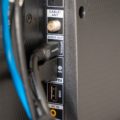One of the most popular and reliable microphones for sound and music reproduction is the dynamic microphone. Dynamic microphones work similarly to speakers but in reverse. They are ideal for capturing high sound levels from musical instruments or amplifiers and do not require batteries or external power. They also do not have an internal amplifier. Dynamic microphones are commonly used for guitar amps, drums, and as backup for vocal sound. In fact, they are suitable for general use.
To understand how dynamic microphones work, we can think of them as reverse floor monitors. While stage speakers convert electrical data into sound waves, microphones perform the opposite function. Although many microphones follow the same principle, dynamic microphones excel in their execution.
The basic principle behind dynamic microphones is the concept of electromagnetic induction. Moving a magnet near a coil of wire generates an electrical current. Dynamic microphones utilize this principle to convert sound into electrical data. A diaphragm is connected to a coil of thin wire, which is positioned within the magnetic field of the magnet. As sound waves cause the diaphragm to vibrate, the coil moves back and forth within the magnetic field.
The movement of the coil within the magnetic field induces an electrical current in the wire. This current represents the electric shape of the sound wave. It’s important to note that the frequency response of dynamic microphones is not uniform. Different models are designed with specific applications in mind, and their frequency response may be limited. However, with advancements in technology, dynamic microphones with neodymium magnets have become more popular. These magnets are durable and versatile, allowing for smaller-sized microphones with increased output levels and linear frequency responses.
Manuel Marino is a seasoned Senior Producer, Music Composer, and Artist with over a decade of experience. He specializes in branded entertainment across various mediums, including video games, films, and advertising campaigns. With 20+ years as a game music composer, Manuel has worked on numerous platforms, creating diverse orchestral soundtracks. HIRE ME


 Manuel is a passionate, driven, and techsavvy AV technician,
Manuel is a passionate, driven, and techsavvy AV technician, 










